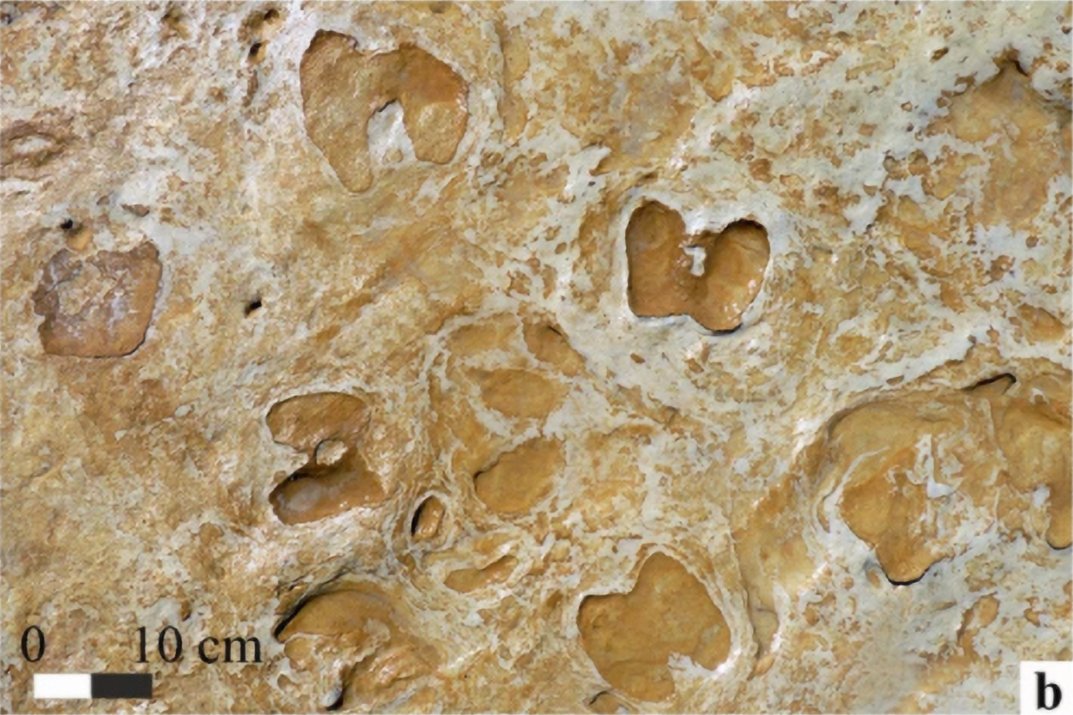Neanderthal children playing in sand?

A group of 87 human footprints, made by 36 individuals, including 11 children, has been discovered in a Spanish National Park. They, together with footprints from a range of animals, were exposed after storms and high tides in sedimentary rock on a beach. The research team assigned the prints to Homo neanderthalensis. At an alleged 100,000 years old, they are the earliest known Neanderthal footprints in Europe.
The prints, with their distinctly human foot form, are not in straight lines, so it was not likely a migration or passage path. The children’s footprints especially are somewhat chaotic. Lead author Eduardo Mayoral said this could indicate “they were playing or loitering on the shore”. There was no confirming evidence such as fossil bones that the footprints were created by Neanderthals. However, evolutionists say that Homo sapiens only arrived in the area about 80,000 years ago, so they called them Neanderthal prints by default.
Concerning the footprint makers, the prints were referred to as “frozen moments of their existence”. This highlights that the prints, as is the case for most fossils, had to have been covered by sediment quickly—here most likely from a local flooding event. Footprints exposed to the elements do not last for long.
These are not the ‘oldest’ human footprints; the famous Laetoli prints are ‘dated’ at 3.6 million years old, and more recently, prints in Crete at 5.7 million years. Evolutionists admit both sets are distinctly human-like, but the dates are too old. So, they claim the prints must have been made by ape-like human ancestors—solely because of the dating.
This evidence points to a straightforward conclusion—the prints were all made by fully-human post-Babel descendants of Noah. They all had the same amazing foot design, established by the Creator God at the beginning.
- Mayoral, E. and 7 others, Tracking late Pleistocene Neandertals on the Iberian coast, Scientific Reports 11:4103, 11 Mar 2021.
- Metcalfe, T., 100,000-year-old Neanderthal footprints show children playing in the sand, livescience.com, 13 Apr 2021.


Readers’ comments
Comments are automatically closed 14 days after publication.